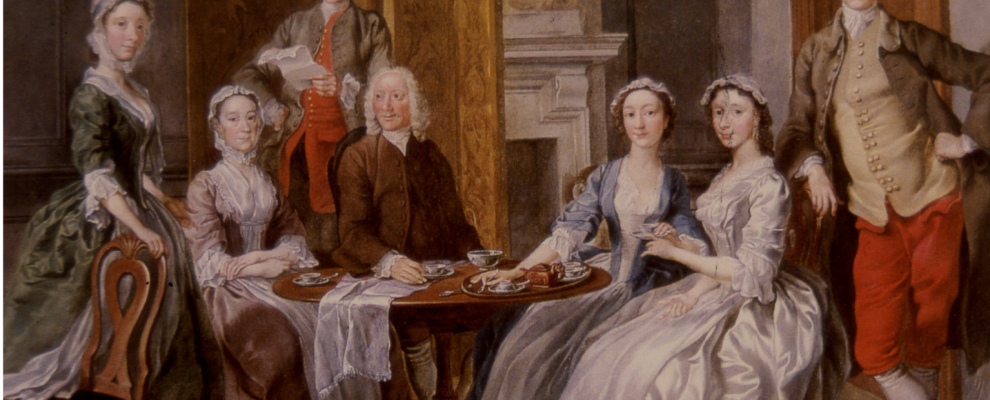A fascination with all things new and exotic fuelled the rising popularity of three beverages: chocolate, coffee and tea. Availability of such luxury consumer goods increased through Georgian Britain’s imperial and mercantile pre-eminence. Part of the allure of coffee and chocolate was their colonial origins, symbolising the strength of the growing British Empire.
Chocolate was served hot and was often mixed with other exotic flavours such as cinnamon. Consumers strove for a ‘full flavour, smoothness on the palate and immediate union with liquids’. Coffee, also known as the ‘Turkish drink’, was celebrated for its powers to stimulate. It was sold primarily in coffee houses and was marketed as an invigorating alternative to beer. Some critics, like Thomas Tyron dismissed it as a passing fad:
In a word, coffee is the drunkard’s settle-brain, the fool’s pastime, who admires it for being the production of Asia, and is ravished with delight when he hears the berries grow in the deserts of Asia, but would not give a farthing for an hogshead of it, if it were to be had on Hampstead-Heath or Banstead Downs.
The Good House-wife made a Doctor, 1692, quoted in Ivan Day (ed.), Eat, Drink & Be Merry: The British at Table 1600-2000, 2000
Whilst coffee was associated with the raucous masculine environment of the coffee house, tea became viewed as a rarefied, domestic beverage. Although coffee and chocolate were preferred at first, tea’s popularity rapidly rose, beginning in the 1730s. Between 1785-1787 England and Wales imported 16.3 million pounds of tea, whilst gross imports of coffee totalled just 7 million pounds, 85% of which was re-exported. Tea from China was especially prized, with blends such as Bohea and Hysan being amongst the most sought after. Tea was originally celebrated for its therapeutic properties, and was sold through apothecaries, coffee shops, snuff shops, grocers and later ‘china warehouses’. The tea-drinking experience was also believed to help facilitate polite conversation, improving participants’ manners and creating a more genteel society.
The Fairfax family’s appetite for tea is well documented. Bills from August to November 1767 total £2.12s for green tea: the equivalent of a half year’s wages for one of their chambermaids. The monetary value of tea and the social value placed upon its consumption were also reflected in the lavish accoutrements bought to accompany it. The explosion of tea drinking led to high demand for tea-drinking wares, influenced by Chinese imports from the East India Trading Company. These expensive and often exquisitely crafted objects were essential to the tea-drinking ritual. From finely wrought porcelain cups and saucers, silver teapots, kettles and cutlery, through to mahogany and inlaid tortoise shell caddies, the equipage bolstered and reflected the glamour of the polite beverage.
Further reading:
Ivan Day (ed.), Eat, Drink & Be Merry: The British at Table 1600-2000, 2000.
Melanie King, Tea, Coffee & Chocolate: How We Fell in Love with Caffeine, The Bodleian Library, 2015.
Links to further information:
www.tea.co.uk – website of the UK Tea & Infusions Association (includes detailed histories of tea in the UK)

